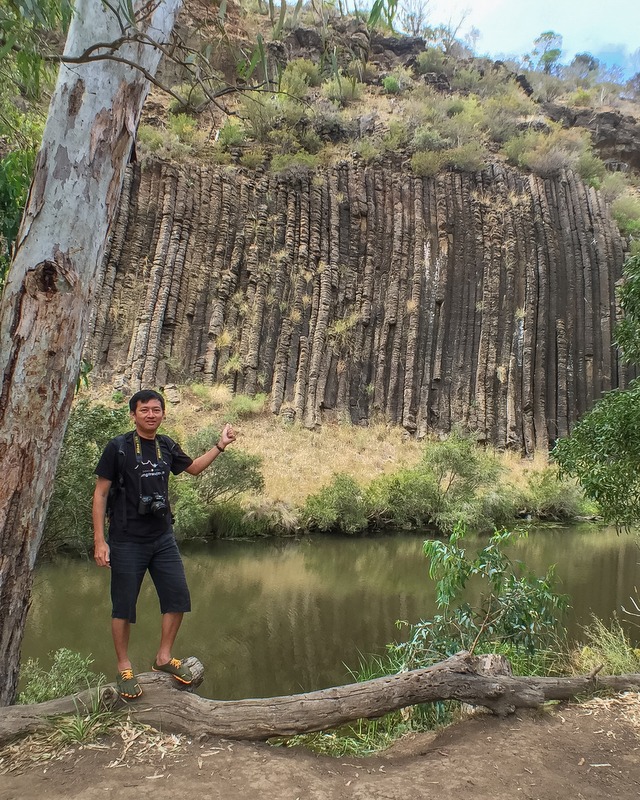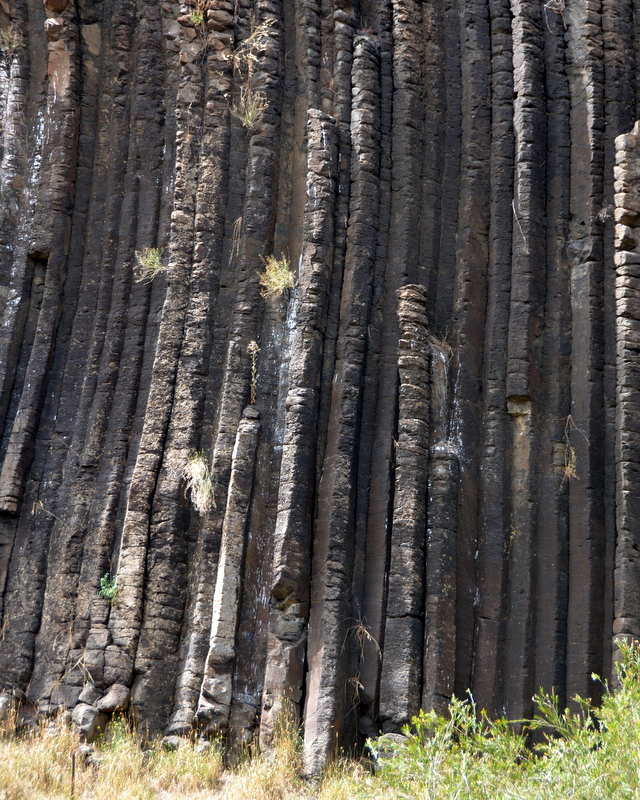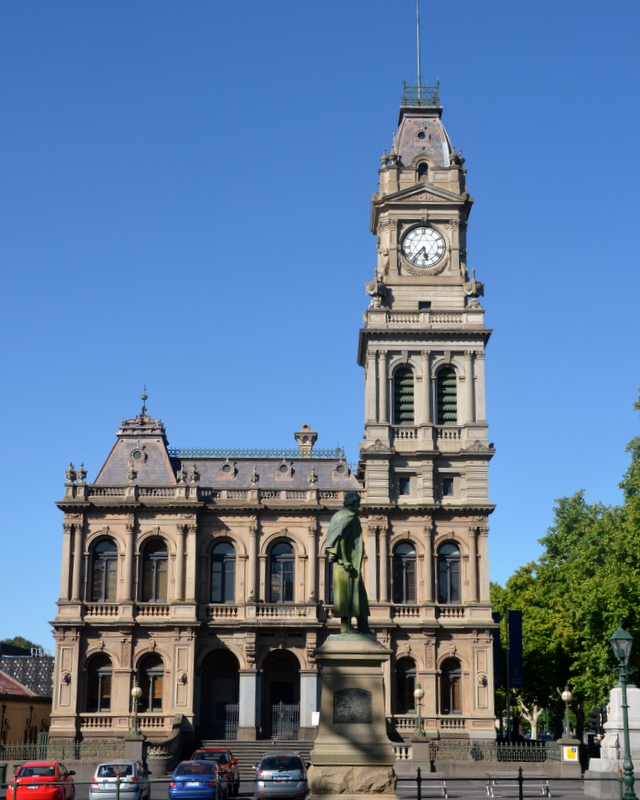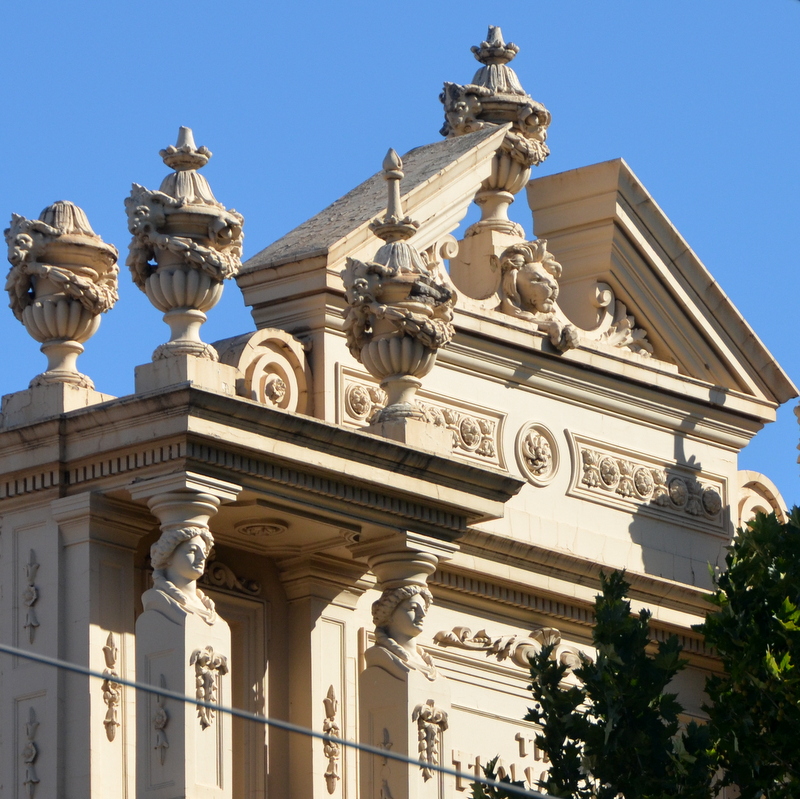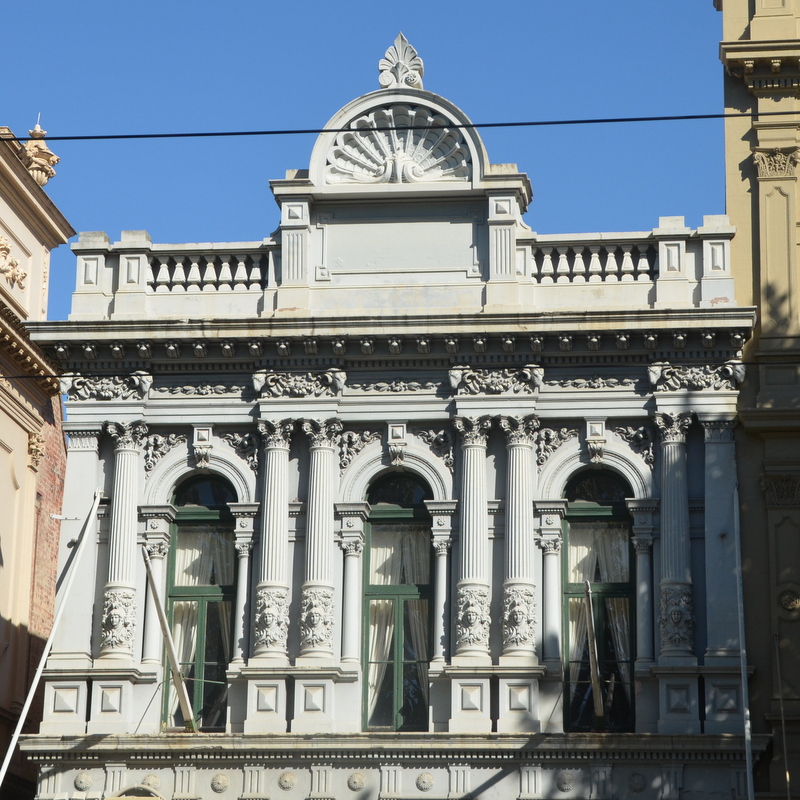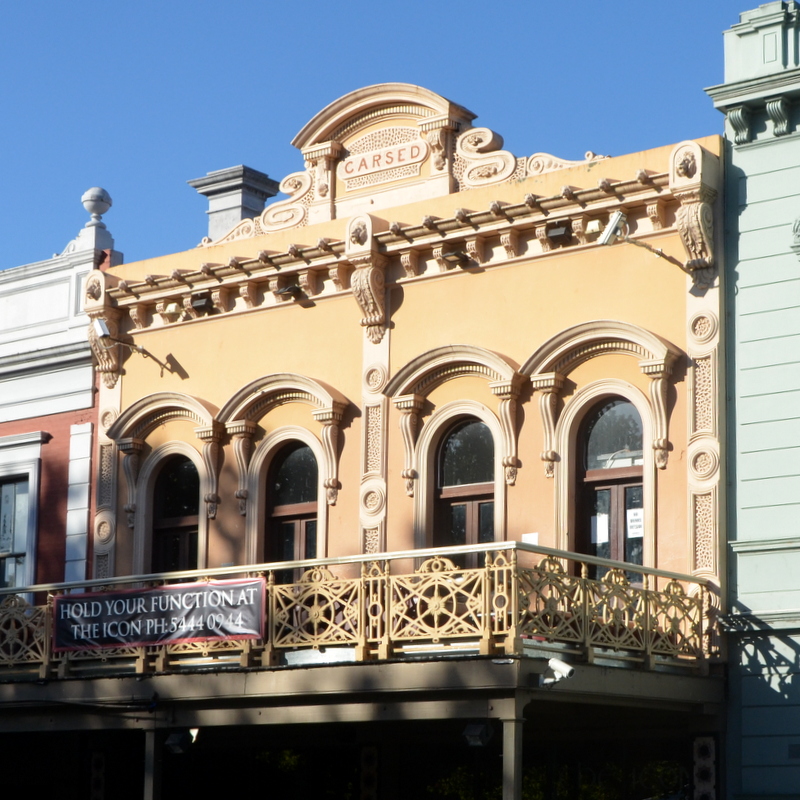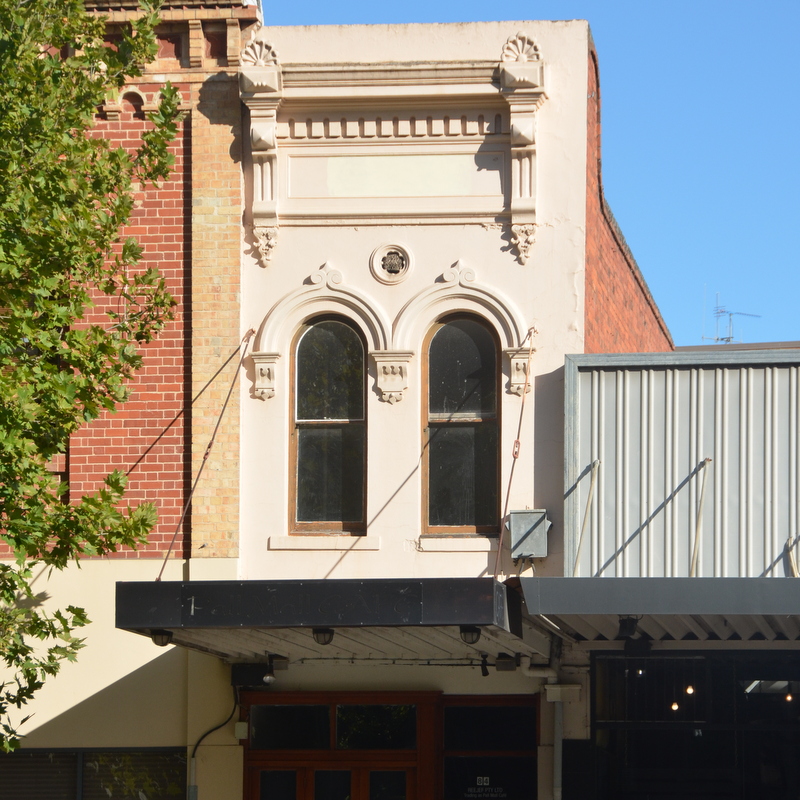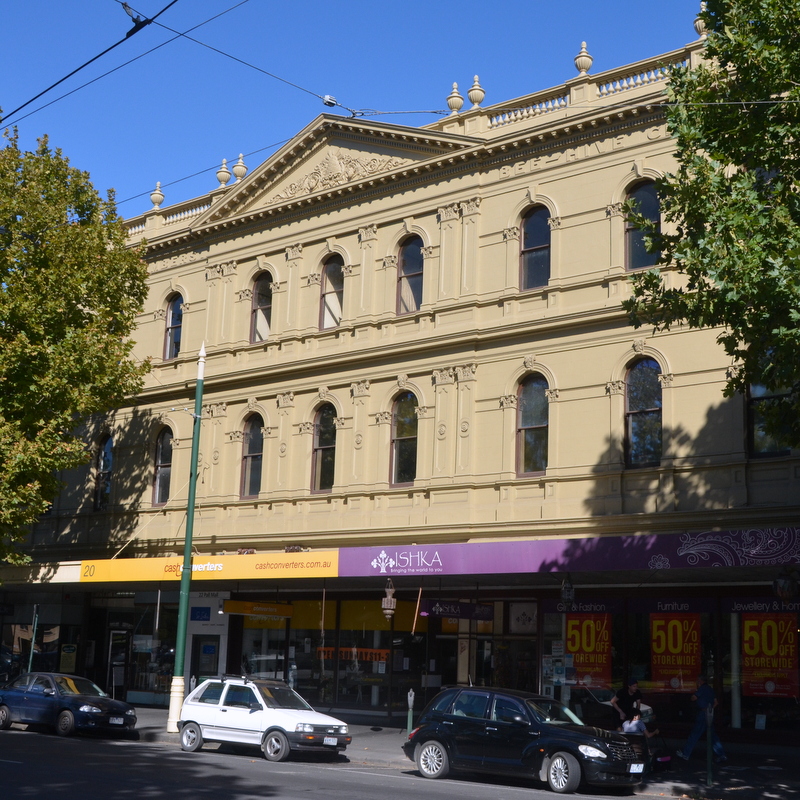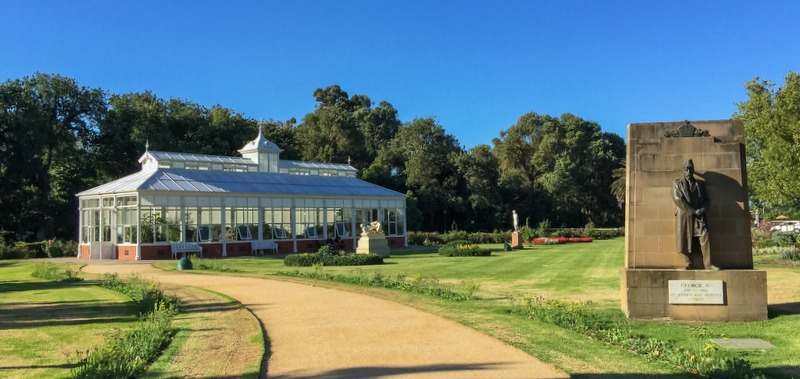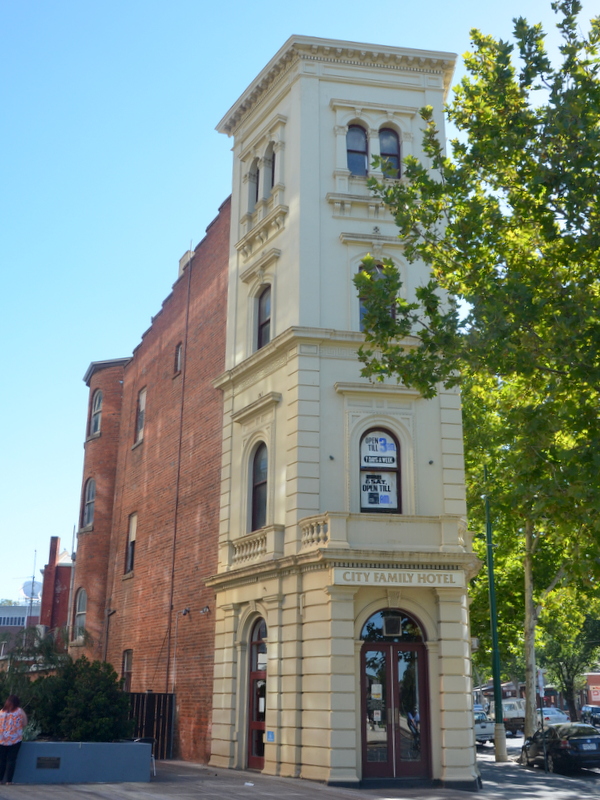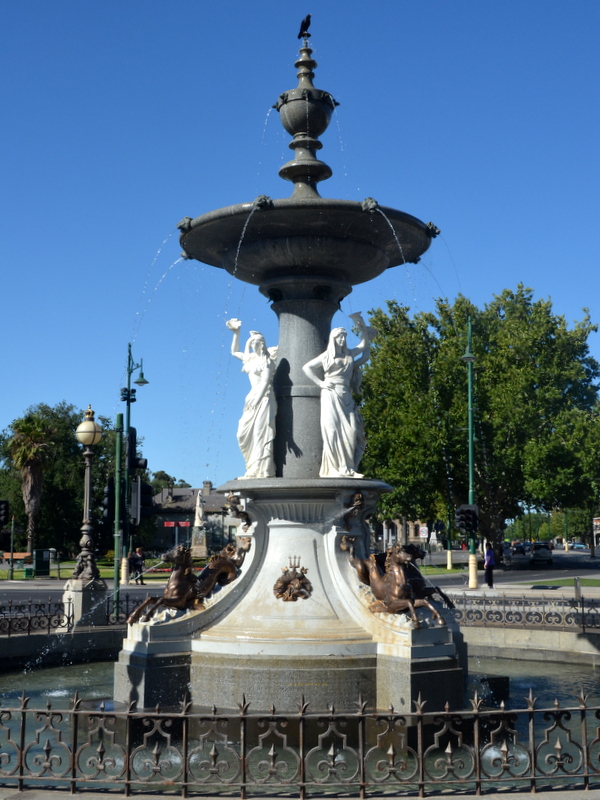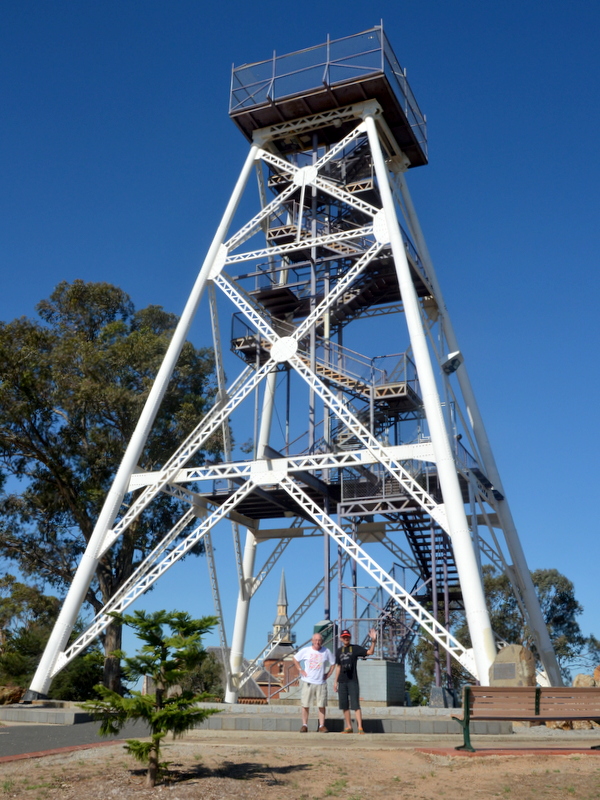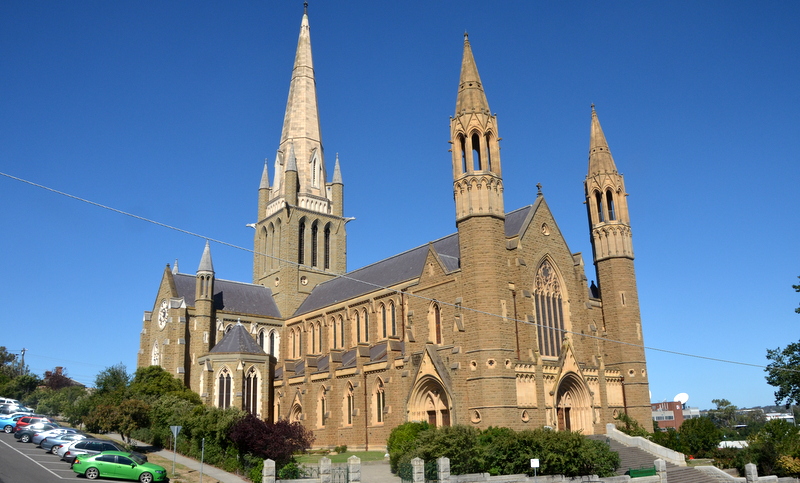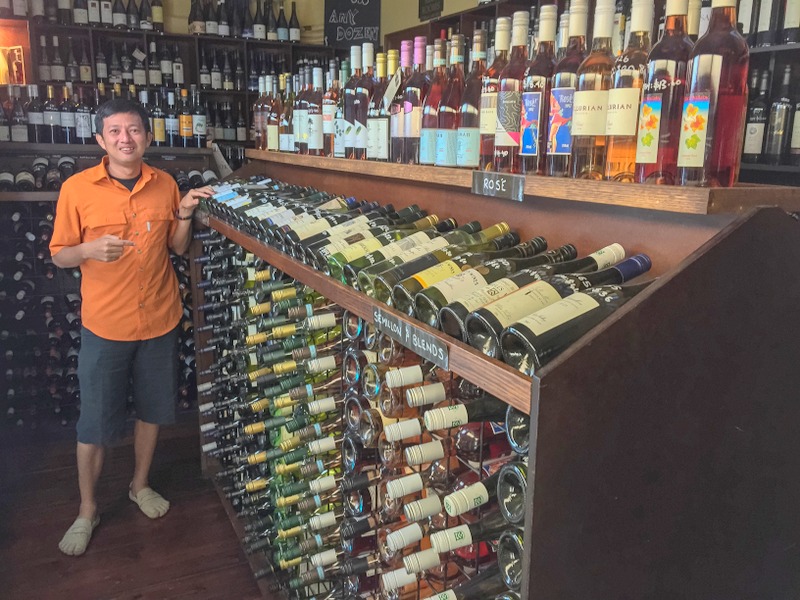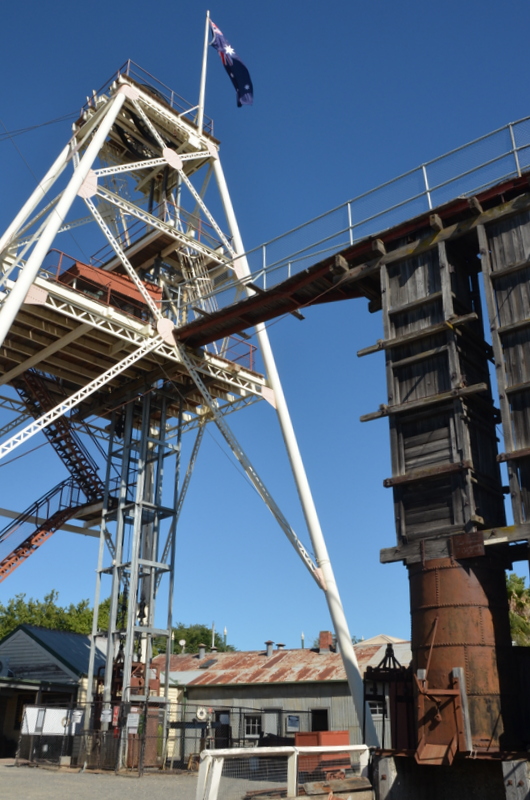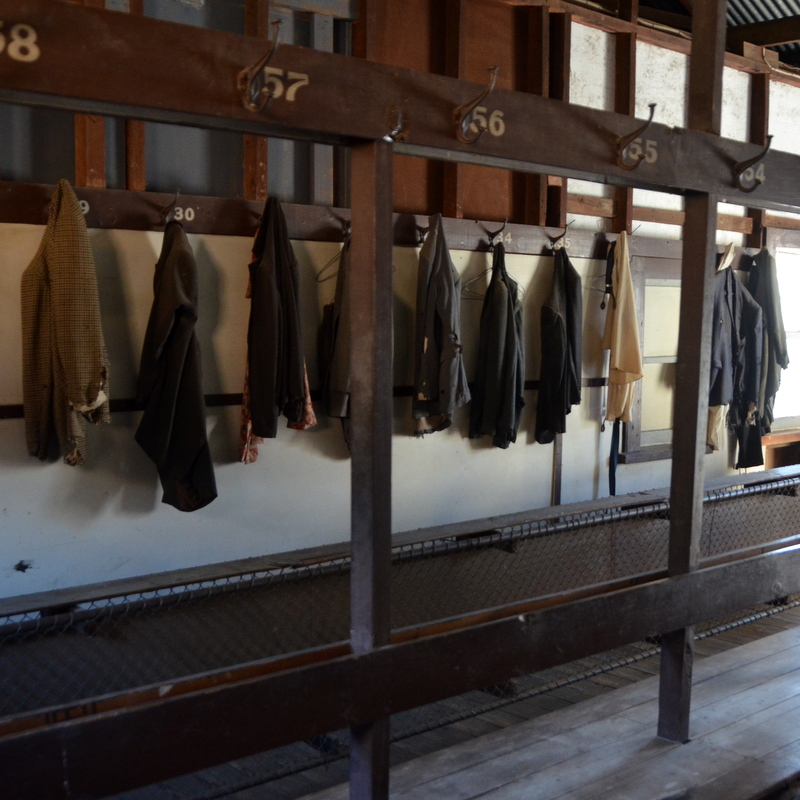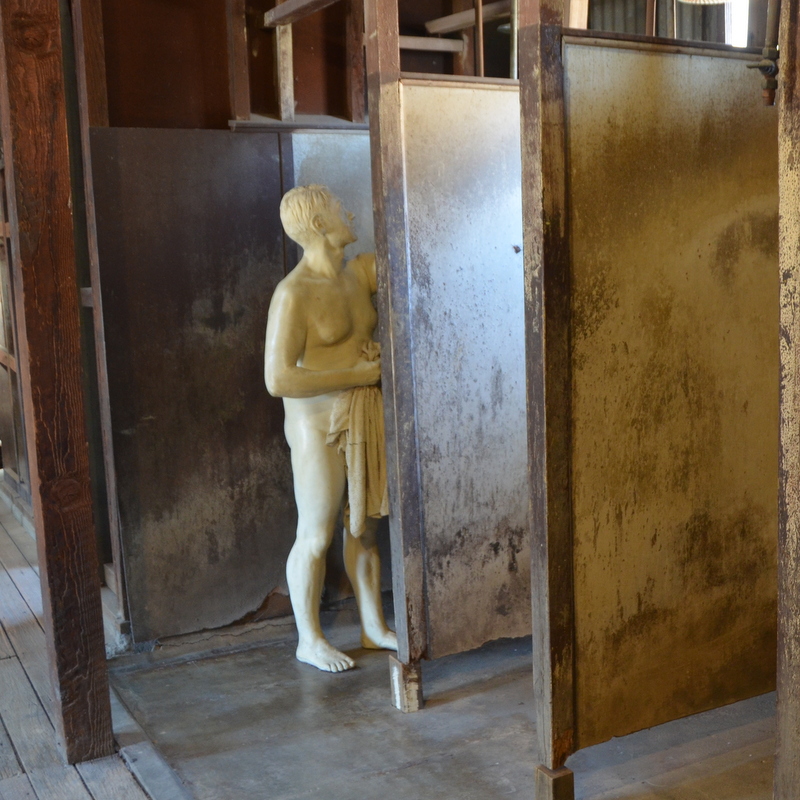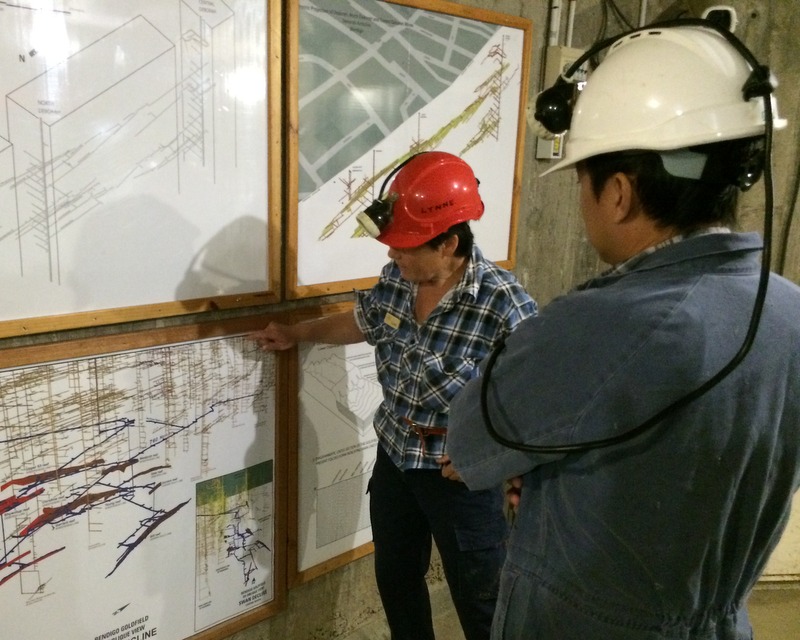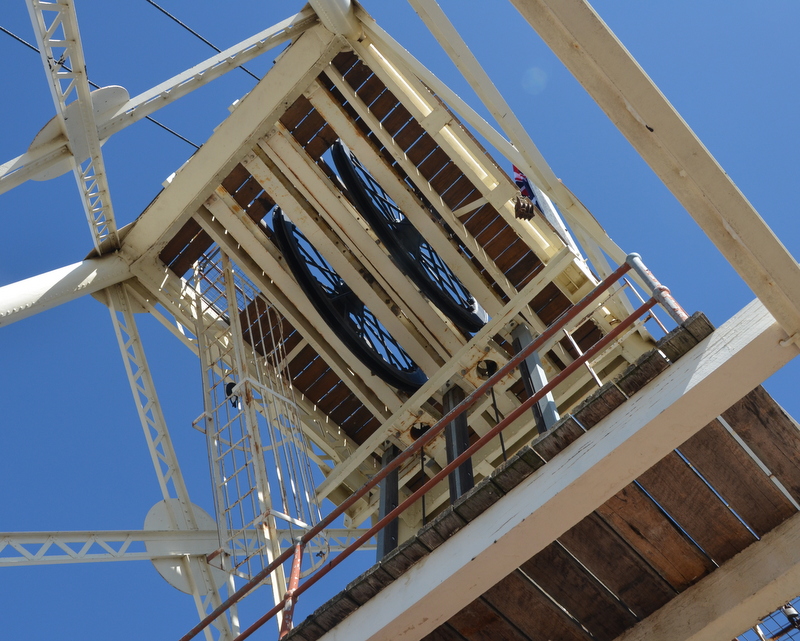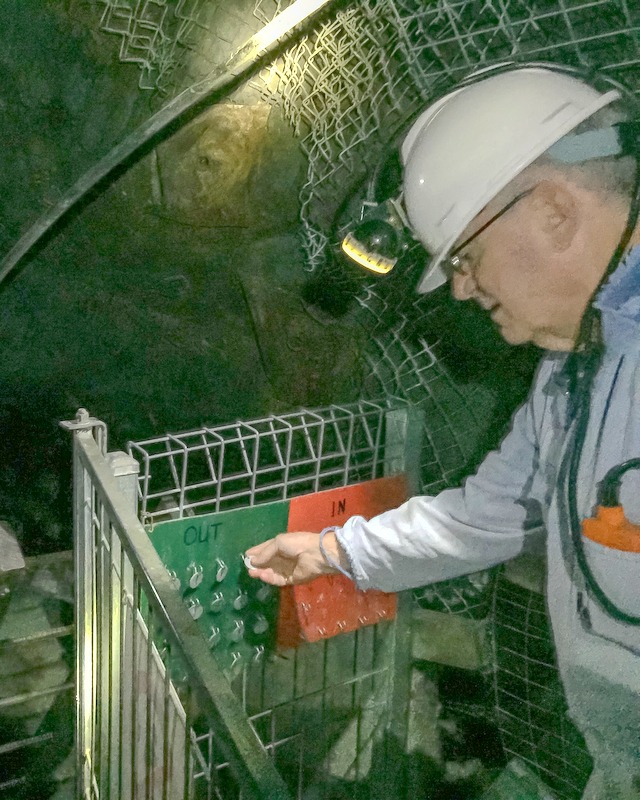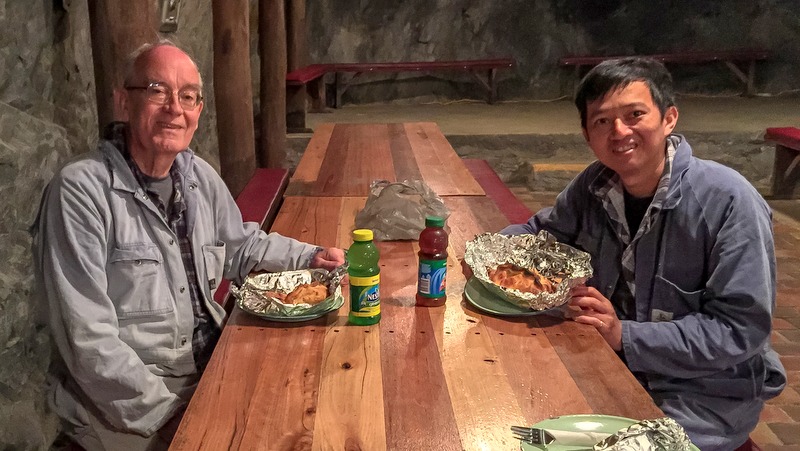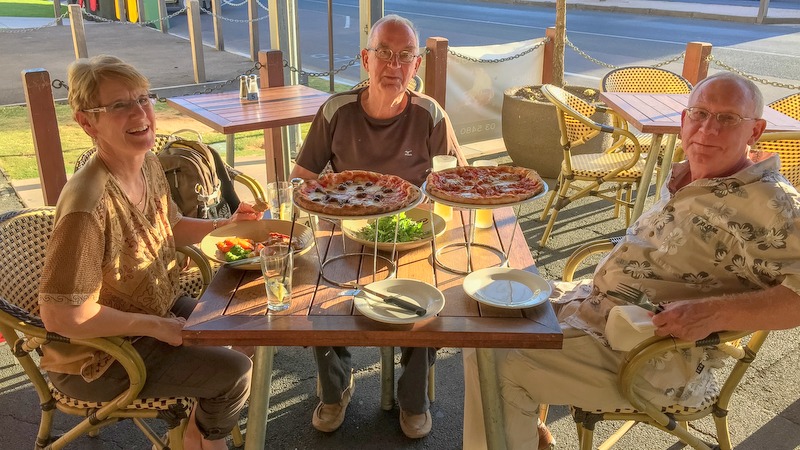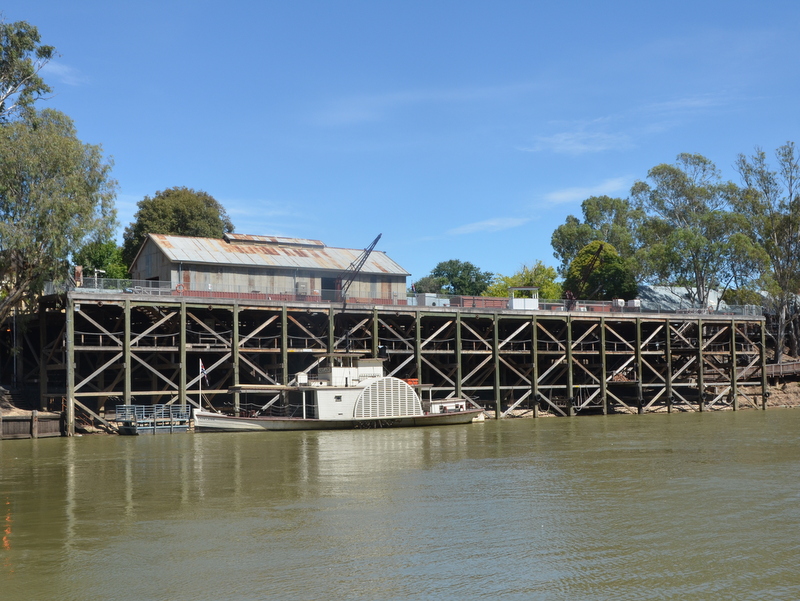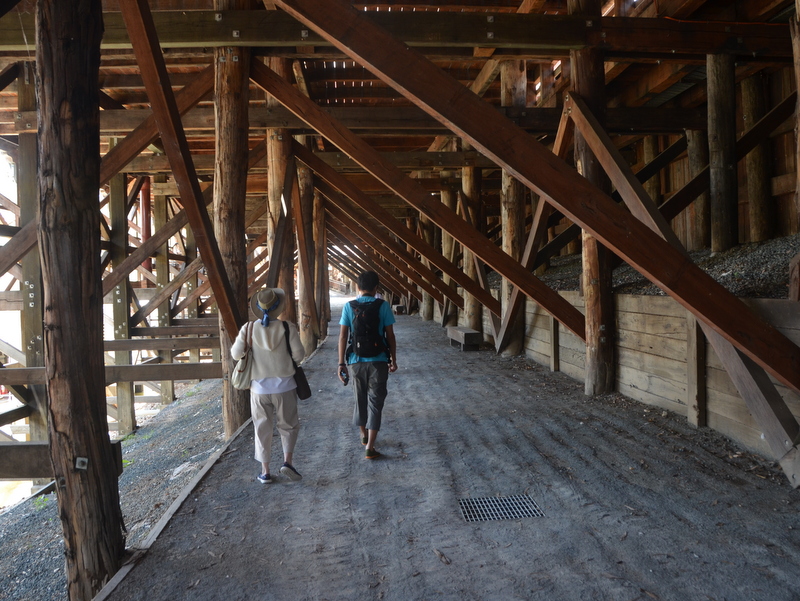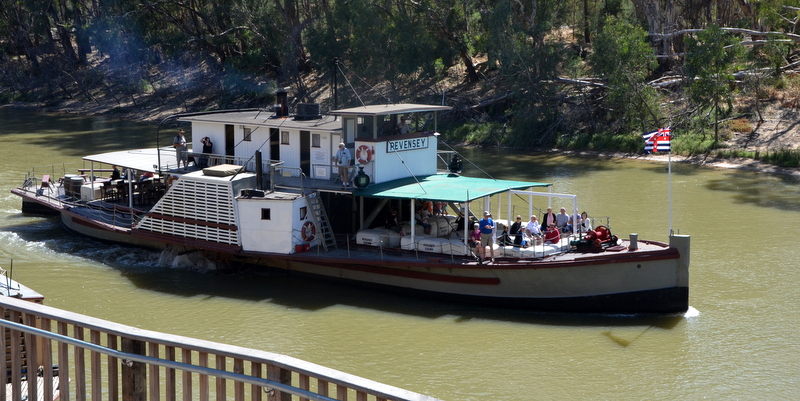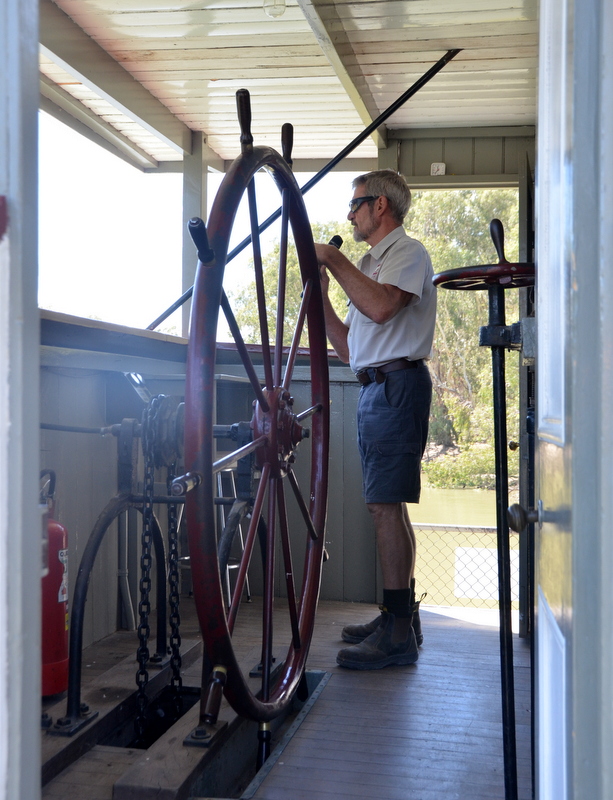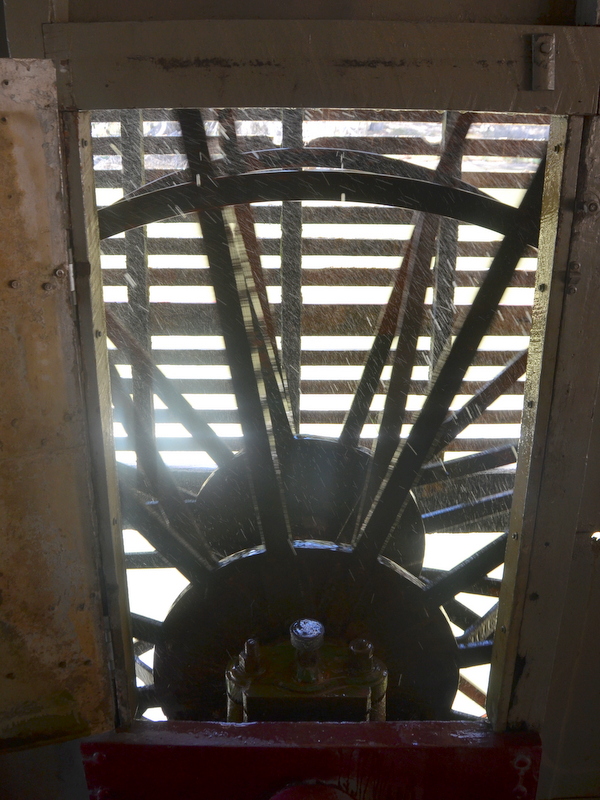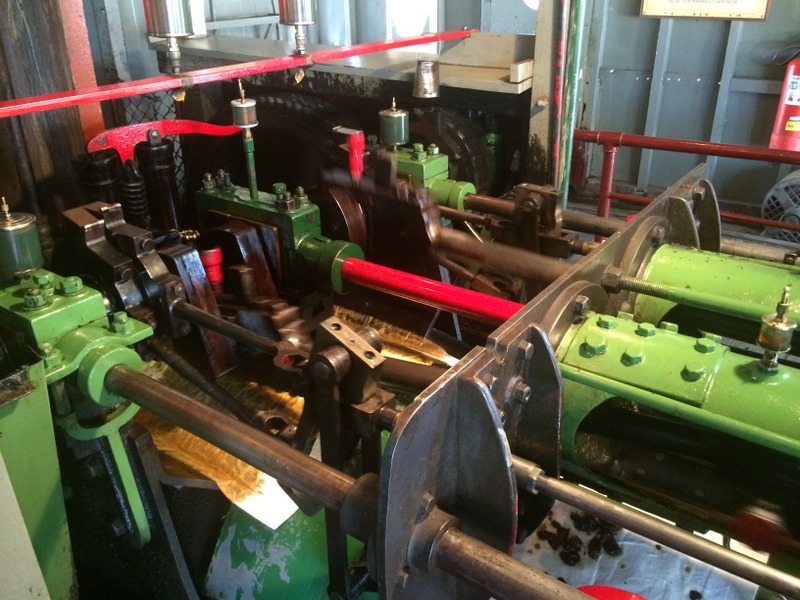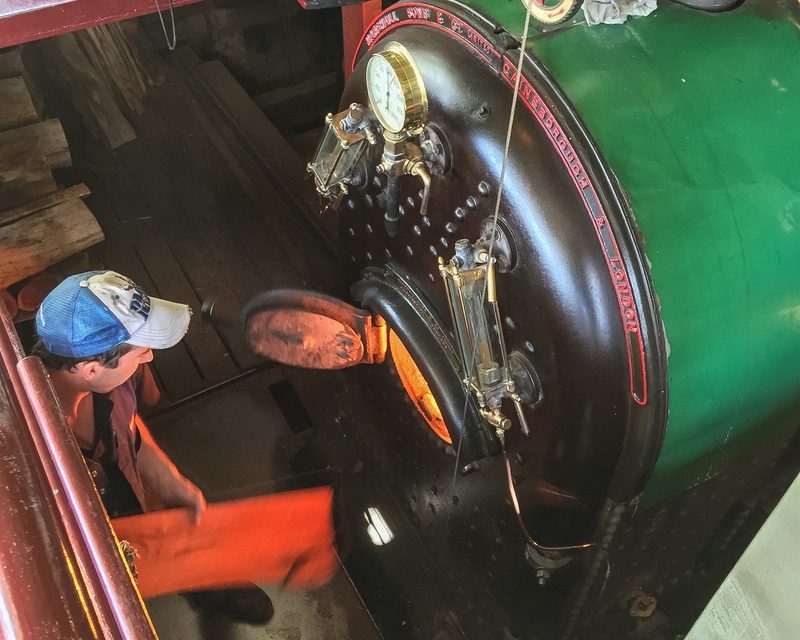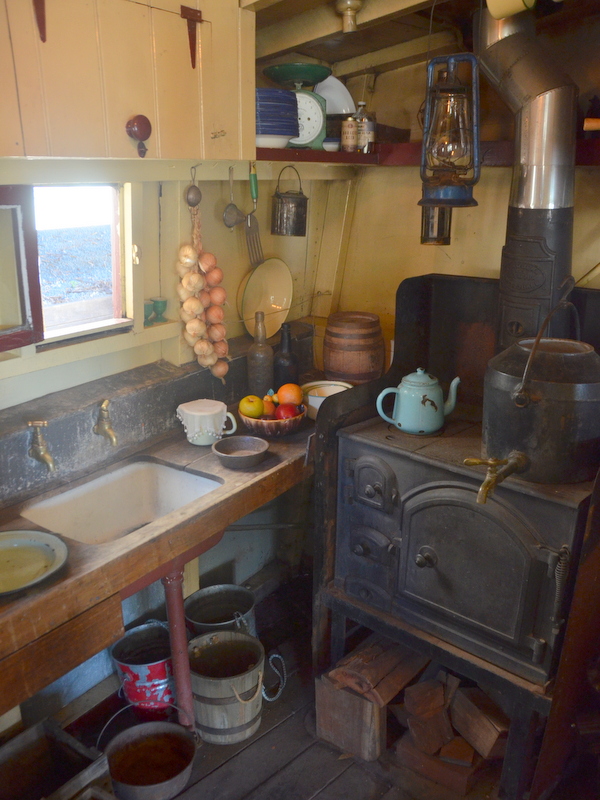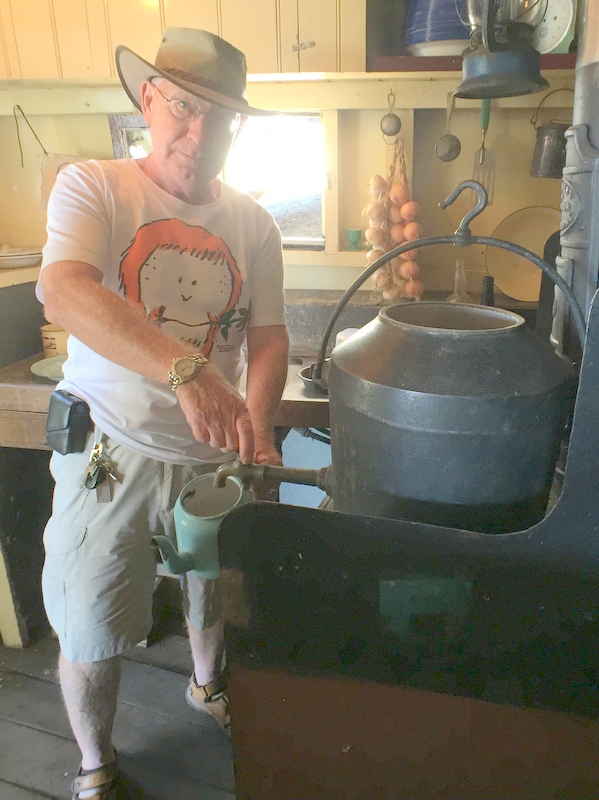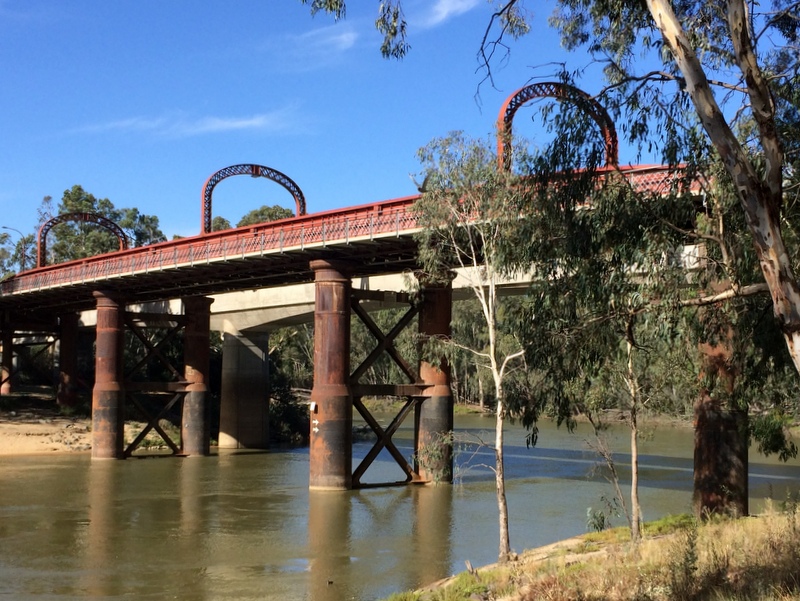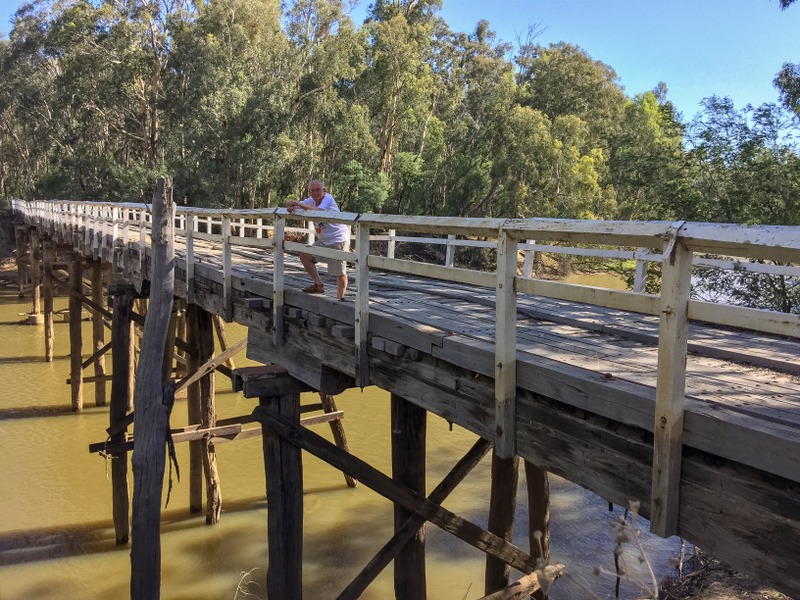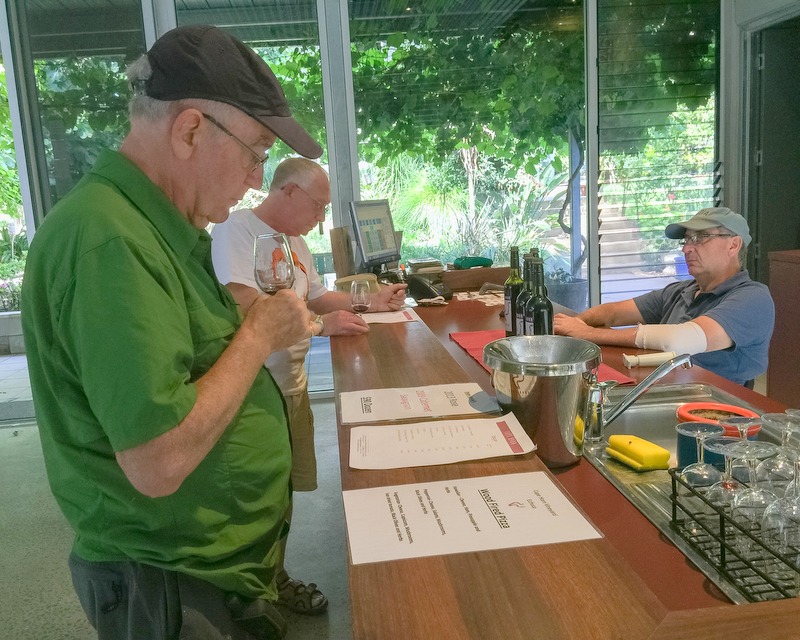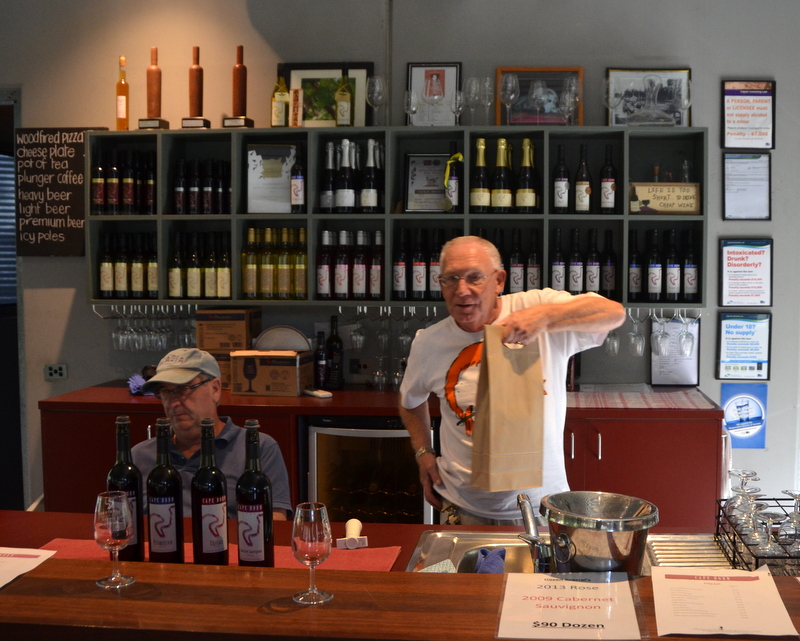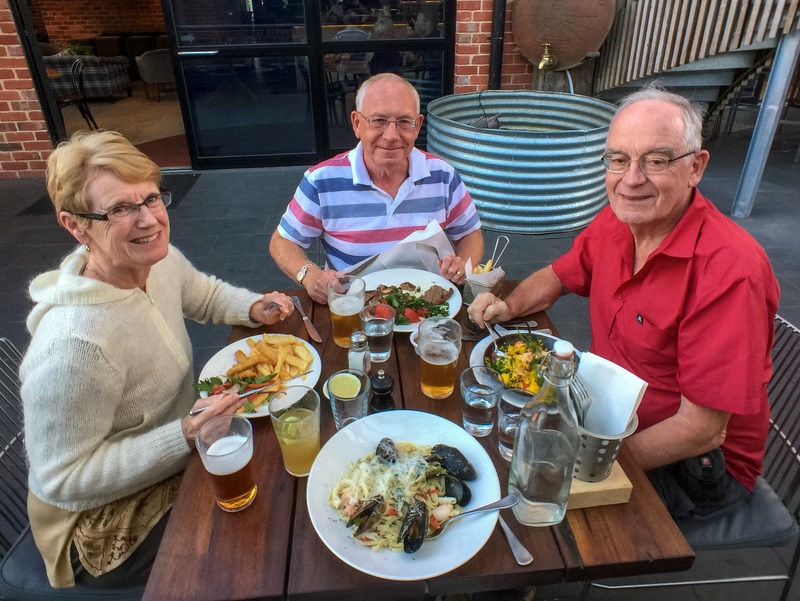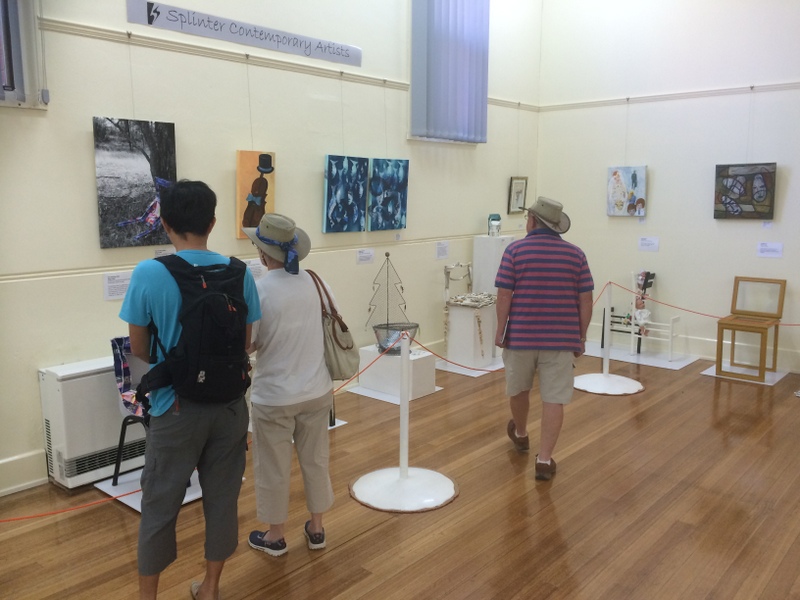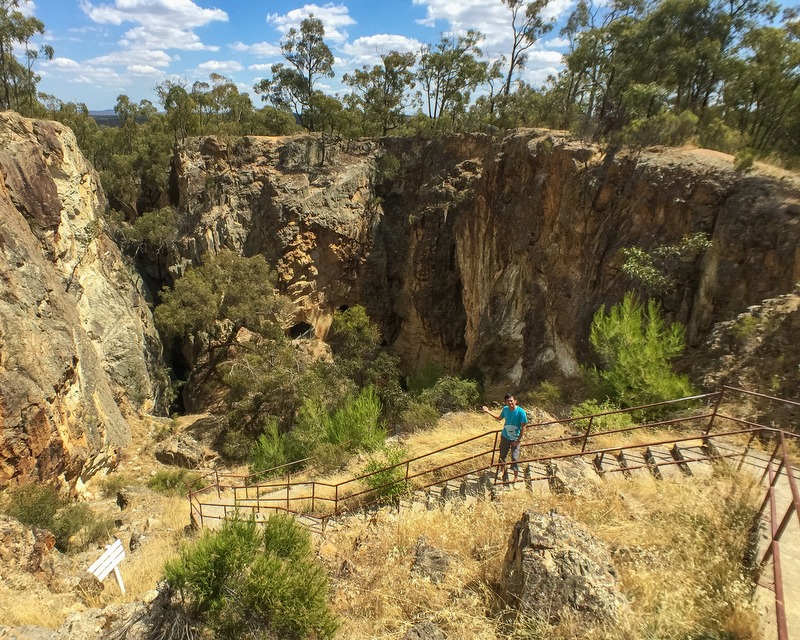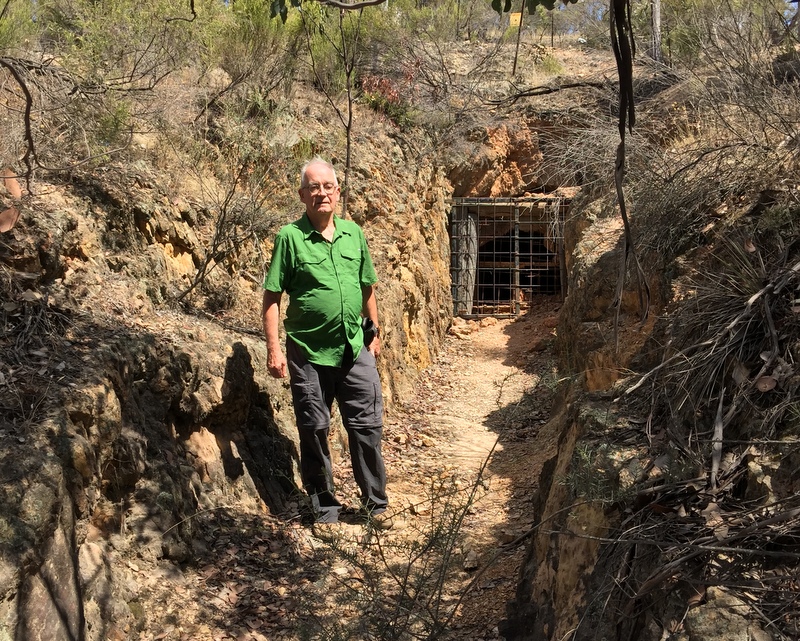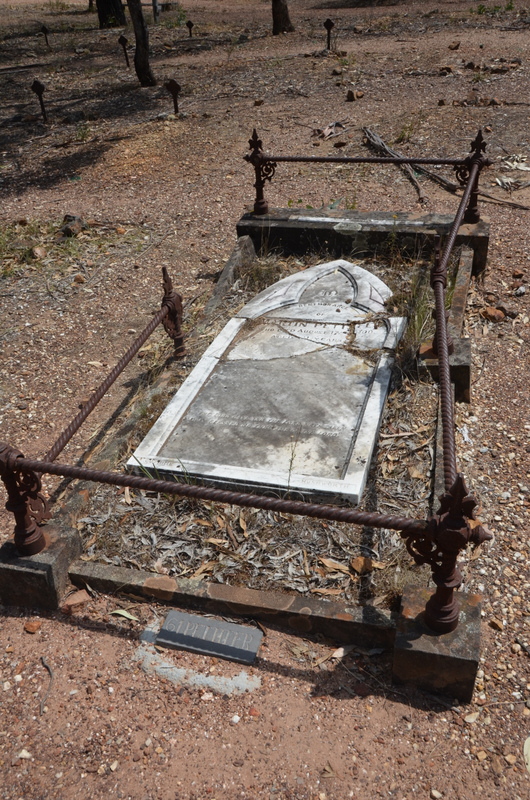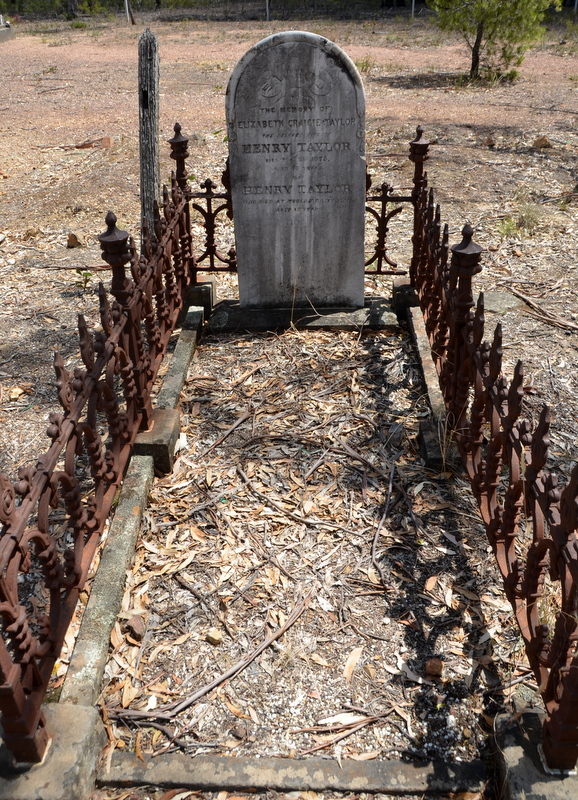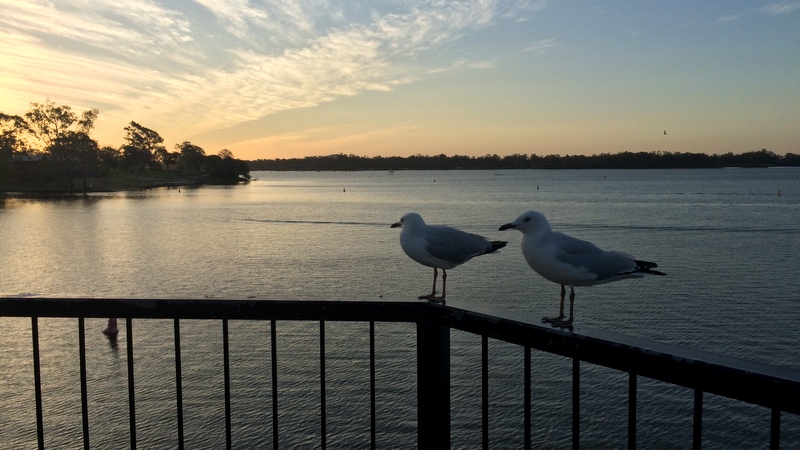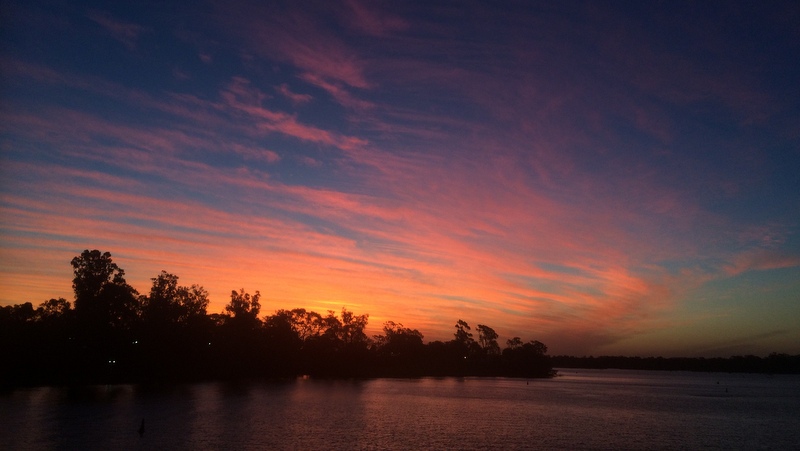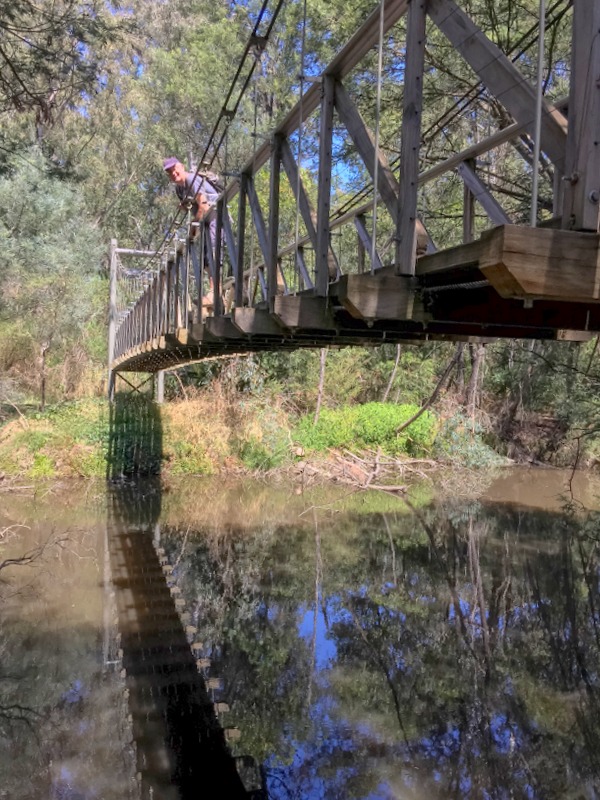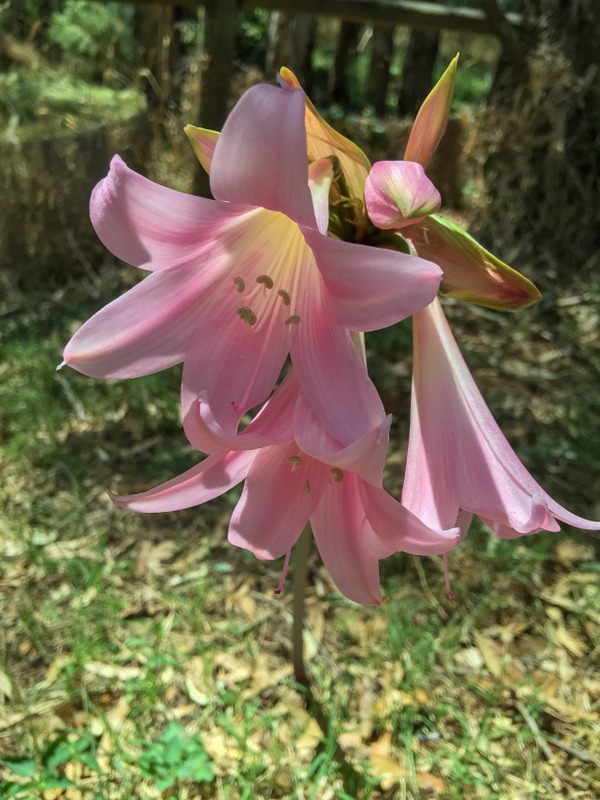During our visit to Pat and Roger in 2015 we went with them on a 5D4N trip in the state of Victoria. First Roger took us to the Organ Pipes National Park. The “organ pipes” are basalt columns, their origin is volcanic and they are 2.5-2.8 million year old.
After lunch in the small town of Woodend we continued to Bendigo where we stayed overnight. In the 1850s gold was found here and Bendigo became a boomtown, attracting gold-diggers from everywhere. There is a goldmine that can be visited and there are numerous imposing buildings in Victorian style. A very pleasant town. This is Pall Mall, the main street. Left the War Memorial, in the middle the former Post Office and to the right, behind the trees, the Shamrock Hotel.
Many buildings are in the (Victorian) Second Empire style. From left to right the former Post Office (1883-1887), the Town Hall (1878-1902) and the Law Courts (1892-1896). Impressive architecture.
The monumental Shamrock Hotel began in 1856 but was several times rebuilt, until the final version in 1907.
Just a few more architecture pictures.
The Rosalind park was where the goldrush started in 1851. It has been a Government Camp before it became a park.
The Alexandra Fountain is located at the entrance of the park and was designed by William Vahland, the main architect of Bendigo in those days. A poppet head is a frame at the top of a mineshaft, supporting pulleys for the ropes used in hoisting . This poppet head comes from a different gold mine and is now a lookout.
The Sacred Heart Cathedral is unusually large for a small town. Construction started in 1897, in Gothic Revival style, but was completed only in 1977.
We had dinner in the Wine Bank on View, a favourite of Roger. It is a wine bar and wine merchant.
They also serve delicious food.
Starters.
We moved inside for the main course.
The next morning Aric and I visited the Central Deborah gold mine, now no longer active and a major tourist attraction. We took the 85 metres: Underground Adventure excursion, very interesting. Overalls, boots, miner’s hat with lamp. A traditional miner’s lunch was served underground.
Various aspects of a miner’s life, changing room, showering, medical assistance.
Our guide explaining where we will go and the poppet head which will lower us down.
An ore deposit, where gold can be found.
Not easy to take pictures underground.
Lunch 85 meter underground.
Before we continued our trip, we visited the Chinese Joss House Temple (1871). During the gold rush many Chinese immigrants came to Victoria to work in the mines.
Our next destination was Echuca on the banks of the Murray river, where we stayed two nights. We had pizza for dinner.
The main attraction of Echuca are the paddleboats. Echuca was founded in 1850 and became fast a major inland port. Nowadays it is a major tourist attraction.
Paddleboats brought their cargo to the Echuca wharf where it was unloaded and transported by rail to Melbourne. The wharf is now Australian Heritage.
Of course we went for a trip, with the paddle steamer Pevensey. It was built in 1911, used to transport wool and still has its original steam engine.
Impressive machinery. Must be a tough job to be a stoker!
The interior of the Pevensey.
Two more paddle steamers. It was a very interesting excursion
In the afternoon we drove around Echuca and visited the Cape Horn Vineyard. The Echuca-Moama bridge dates from 1878, to reach the vineyard we had to cross the Stewart’s bridge (don’t worry, the new one is hidden behind the old wooden structure).
Roger is a wine connoisseur, I am just pretending 😉 .
Of course a day is not complete without drinks and food!
The next day we had a short stop at Kryabam , where we visited the former Town Hall (1895), now an art gallery. Just to prove that we are interested in more than food 😉 .
We continued to Rushworth, another goldrush town. Nice buildings , but not so spectacular as in Bendigo.
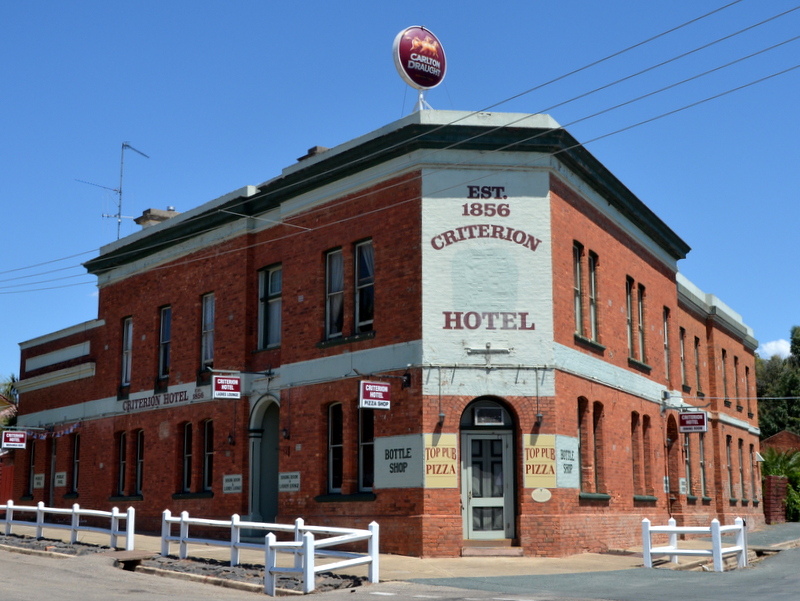
Criterion Hotel (1856) 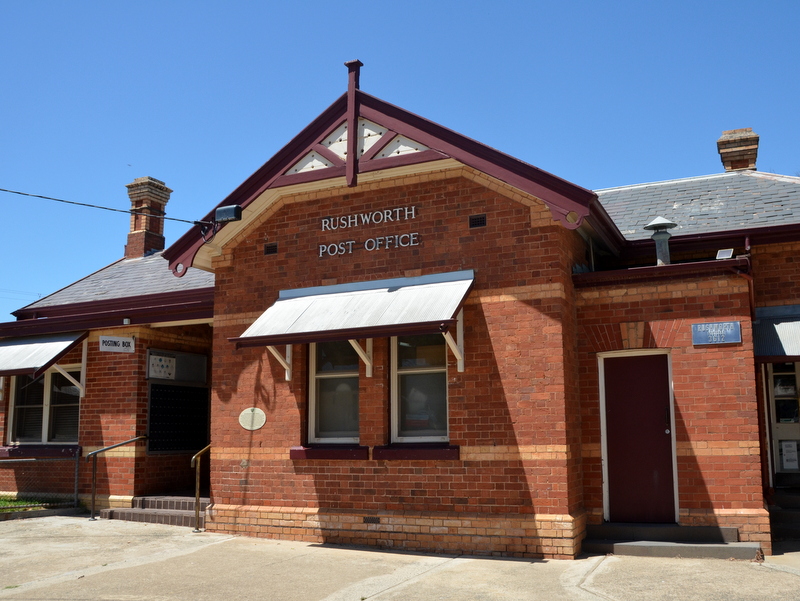
Post Office (1857) 
Shire Hall (1868) 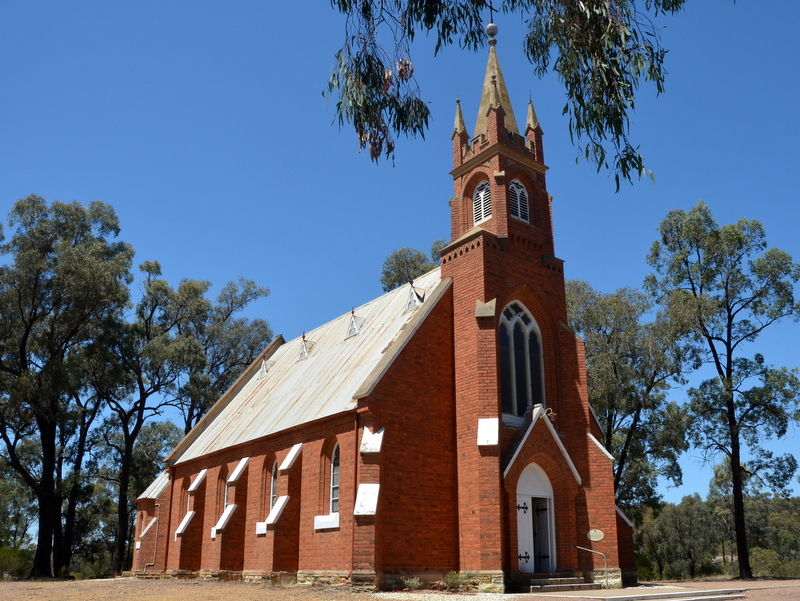
Anglican Church (1870) 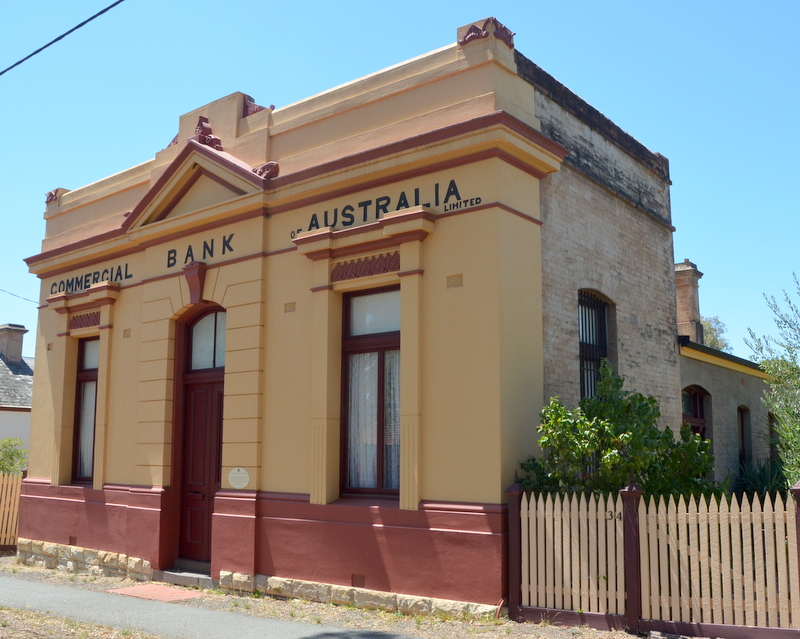
Commercial Bank (1884) 
Mechanics Institute (1913)
I had seen on the Internet that near Rushworth there was an old gold mine with a ghost town. I asked Roger if we could visit that place. He agreed but regretted it when it turned out that the access road was bad, causing some damage to his car. Fortunately Aric could repair it 😉 .
The Balaclava mine is an open-cast mine. The tunnels have been closed for safety reasons, so there is not much to explore.
The ghost town of Whroo is not much more than the cemetery. Hard to imagine that once the town had several churches , a school, a library and a few hotels.
We stayed overnight in a motel in Nagambie and had an al fresco dinner at the Nagambie lake.
A beautiful sunset!
The last day of our trip we visited Yea, another small town, with some interesting buildings. The Shire Hall is from 1877, the Grand Caledonian Hotel was built in 1901.
Yea was founded in 1855, because of the gold rush, but now it is primarily a farming and agriculture town.
The Yea Wetlands are worth a visit,
We had lunch in an heritage building, the E.S Purcell’s General Store (1877).
On our way back to Upwey, we had a stop at Yarra Glen for a drink in the Grand Hotel (1888).
It was a very rewarding trip. Amazing how much we could do in just a few days.


